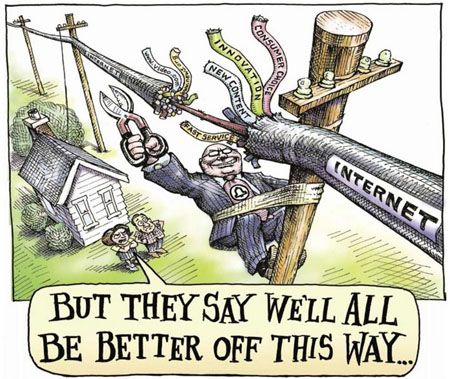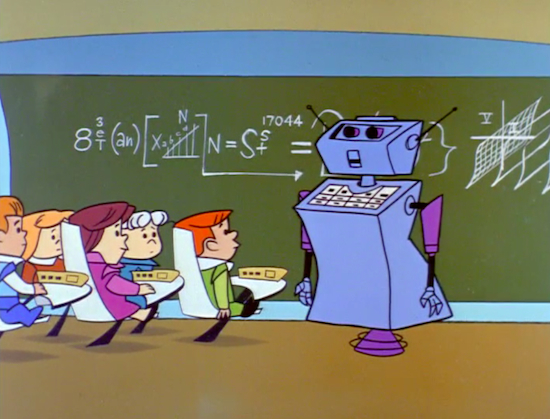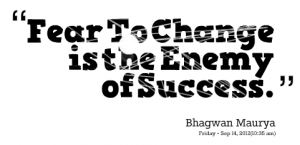In the 2000 hit movie, Miss Congeniality, Sandra Bullock plays a tough FBI agent named Gracie Hart that must go undercover as a contestant to stop an attack on the Miss United States Pageant. Please don’t judge me for referencing a fourteen year-old movie about beauty pageants in an academic blog; I have been in love with Sandra Bullock for years.
One of the best scenes in the movie is when Bullock’s character is asked during the interview portion of the contest, “What is the one most important thing our society needs?” to which she replies “That would be harsher punishment for parole violators.” The crowd is silent and stunned. Noting the audiences’ reaction, Hart adds, “And world peace!” The crowd cheers ecstatically at this response.
.jpg) I read today Tony Bates’ article entitled, 2020 Vision: Outlook for Online Learning in 2014 and Way Beyond. Tony paints a picture for learning in 2020 that many of us wish would happen tomorrow. It is where education needs to go. Below are the questions he asks administrators to consider when planning for their institutions’ future:
I read today Tony Bates’ article entitled, 2020 Vision: Outlook for Online Learning in 2014 and Way Beyond. Tony paints a picture for learning in 2020 that many of us wish would happen tomorrow. It is where education needs to go. Below are the questions he asks administrators to consider when planning for their institutions’ future:
Institutions
- what kind of campus will we need in 10 years time?
- what proportion of course enrollments are likely to be accessed off-campus?
- what will be the best way to accommodate more students – online learning or more buildings?
- what kind and number of teaching spaces will we need?
- what partnerships or strategies should we adopt to protect our enrollment base?
- what are our strategies and policies regarding open educational resources?
- what is our strategy for lifelong learning?
- what financial models should we put in place to encourage innovation in teaching and to attract students?
- how do we ensure that faculty have the skills necessary for teaching in a digital age?
- how can we best reward innovation and high quality teaching?
- what kind of organization and staff do we need to support faculty in their teaching?
- how do we best protect student data and privacy (as well as our staff’s) in a digital age?
– See more at: http://www.tonybates.ca/2014/01/12/2020-vision-outlook-for-online-learning-in-2014-and-way-beyond/#sthash.R2Z1VFUW.dpuf
These are tough questions administrators should be asking and answering. Much of what Tony believes education will look like in 2020 requires some entities that are not known for their ability to be responsive to change, or even want change, to embrace a new model for teaching and learning. I applaud Tony for his vision and challenge those of us in higher education who are ready for a change to make it happen.
Hopefully those fighting change will come around to his ideas…and world peace.
image credit: jumpthecurve.net



 Yesterday, the Supreme Court struck down key components of the FCC’s Open Internet Rules, effectively ending
Yesterday, the Supreme Court struck down key components of the FCC’s Open Internet Rules, effectively ending  While Netflix can afford to pay a higher premium to be able to stream endless hours of content at the highest speeds to their subscribers, how can a consortium of community colleges in Kansas afford to deliver hours of online education to thousands of students via the Internet? They simply cannot afford to pay the same rates as the media monoliths, rendering students helpless and frustrated as they move through their online coursework at the speed of Methuselah, relegated to the bottom of the bandwidth.
While Netflix can afford to pay a higher premium to be able to stream endless hours of content at the highest speeds to their subscribers, how can a consortium of community colleges in Kansas afford to deliver hours of online education to thousands of students via the Internet? They simply cannot afford to pay the same rates as the media monoliths, rendering students helpless and frustrated as they move through their online coursework at the speed of Methuselah, relegated to the bottom of the bandwidth.



 I did, and unlike the resolutions I have made in the past, I was determined to make mine realistic, measurable and attainable, otherwise this year’s batch of promises would end up like many that have come before – totally abandoned by February 28. My first resolution is to improve my health; one quantifiable way I can do that is to go to the gym. I am happy to report that by the end of the first week in January, I had been to the gym six times. As we approach the end of the second week, I have been able to stick to my new workout schedule, in spite of traveling across the country to attend a conference.
I did, and unlike the resolutions I have made in the past, I was determined to make mine realistic, measurable and attainable, otherwise this year’s batch of promises would end up like many that have come before – totally abandoned by February 28. My first resolution is to improve my health; one quantifiable way I can do that is to go to the gym. I am happy to report that by the end of the first week in January, I had been to the gym six times. As we approach the end of the second week, I have been able to stick to my new workout schedule, in spite of traveling across the country to attend a conference.
